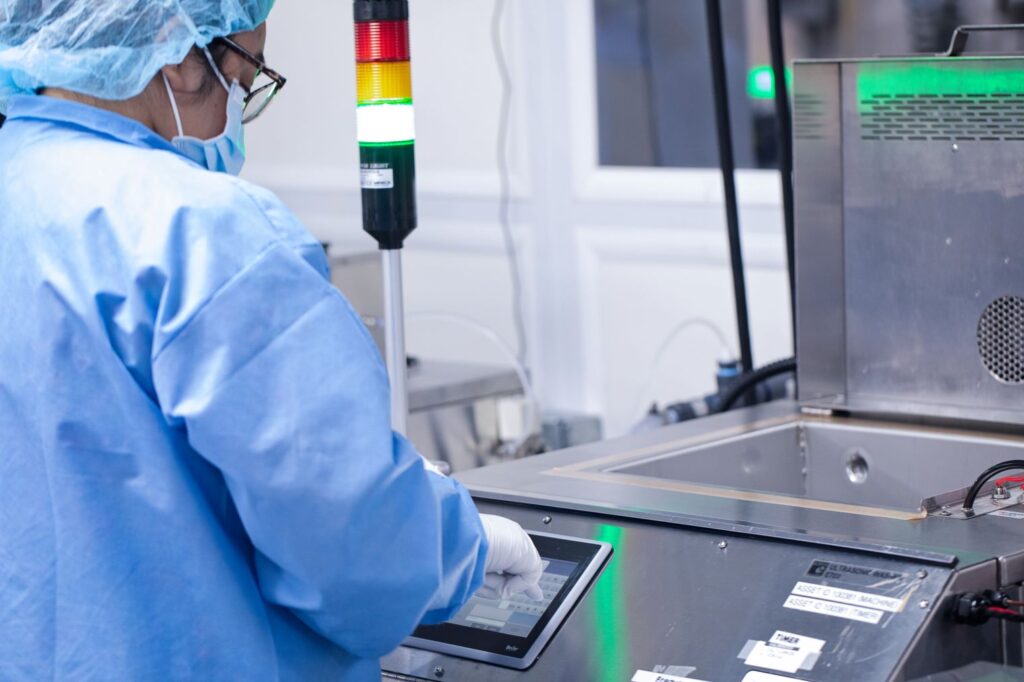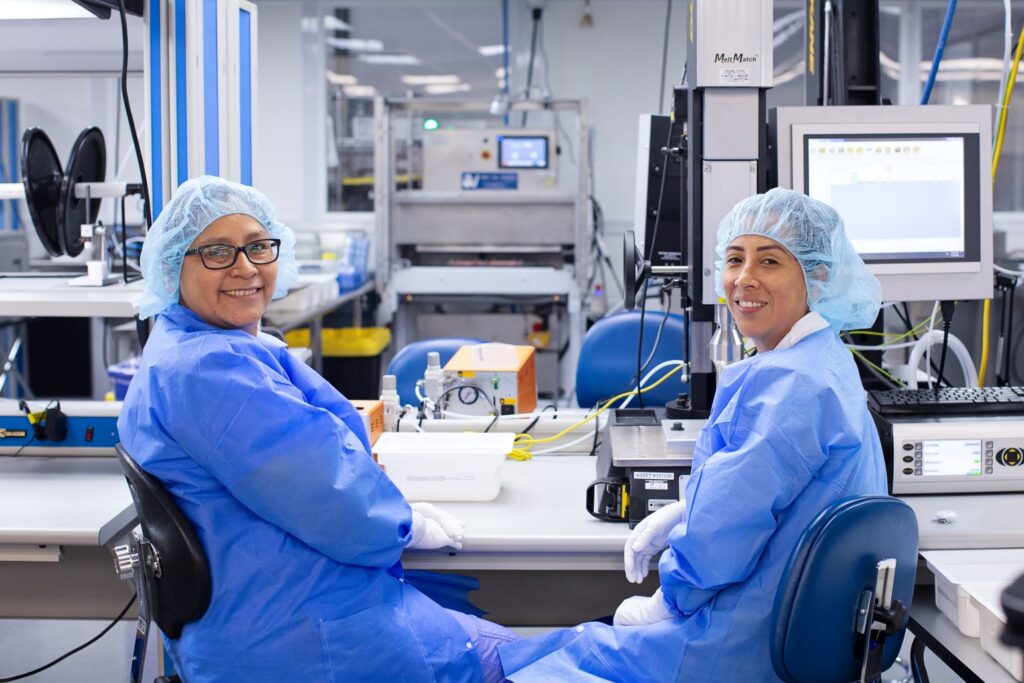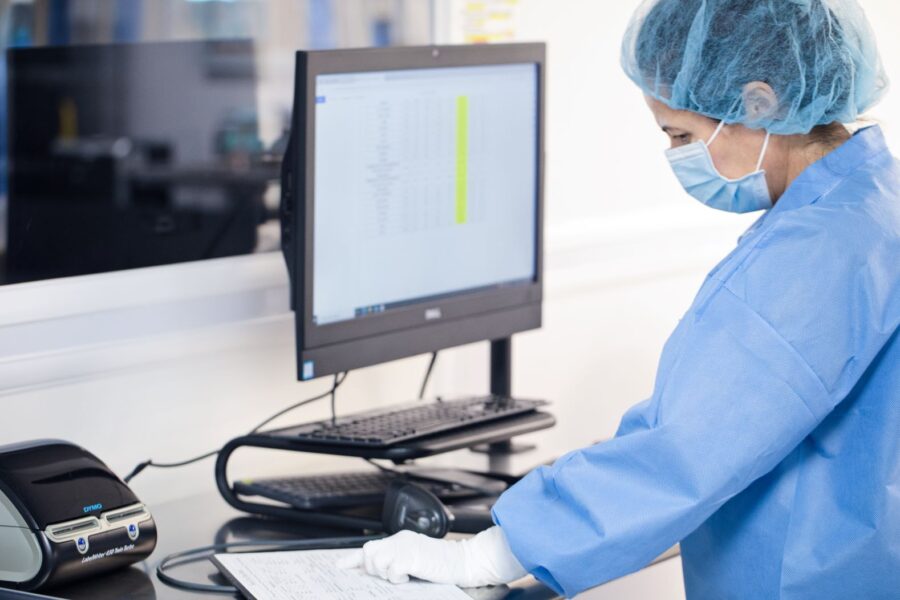Behind every safe and effective medical device lies a comprehensive and meticulous packaging validation process. This process ensures that medical devices are protected, sterile, and maintain their intended functionality throughout their lifecycle.
Regulatory professionals, armed with their expertise and knowledge of regulations and standards, play a pivotal role in this process by ensuring compliance, managing risks, and collaborating with various stakeholders.
Role of regulatory professionals in the process
Regulatory professionals play a critical role in ensuring that medical device packaging protocols comply with regulatory requirements. They have a broader responsibility that encompasses more than just verifying the adequacy of documentation, meeting regulatory requirements, and consistency with the intended use of the medical device.
According to the US FDA’s guidance on medical device packaging, they also need to ensure that the procedures can withstand transport and long-term storage while still maintaining the device’s functionality and sterility.
Overall, a regulatory professional’s role in medical device packaging includes:
- Reviewing and interpreting regulatory requirements: Regulatory professionals must possess in-depth knowledge of regulatory requirements for medical device packaging validation to uphold compliance with regulations and guidelines.
- Developing and maintaining validation protocols: They are also responsible for developing and maintaining validation protocols that are consistent with regulatory requirements.
- Coordinating validation activities: In addition to protocol development, regulatory professionals coordinate and align validation activities with engineering, quality control, and manufacturing teams to ensure a seamless and effective validation process.
- Ensuring compliance with documentation requirements: Regulatory professionals must ensure that documentation requirements for the validation process are met, including document control, change management, and record-keeping.
- Liaising with regulatory authorities: In certain instances, regulatory professionals may need to establish communication channels with regulatory authorities. This allows them to stay informed about regulatory requirements, seek clarifications when needed, and facilitate the regulatory approval process.
As their role in packaging validation is indispensable, it also involves collaborating with packaging engineers, quality assurance personnel, manufacturing teams, and other stakeholders. Together, they ensure that the validation activities are in alignment with regulatory standards and requirements.
Responsibilities and collaboration
Regulatory professionals work closely with packaging engineers to establish validation strategies that meet regulatory expectations. They contribute to the development of protocols, testing procedures, and acceptance criteria.
Furthermore, they work hand-in-hand with quality assurance professionals to align the validation process with the organization’s quality management system. This collaboration entails setting up controls, performing inspections and audits, and confirming adherence to regulatory guidelines.
In addition, regulatory professionals collaborate with manufacturing teams to ensure that packaging processes are properly validated. They provide guidance on establishing process controls, conducting process validation studies, and implementing appropriate monitoring and verification activities.
Ensuring compliance and documentation
Compliance with regulatory requirements is paramount in medical device packaging validation. Regulatory professionals review and approve documentation related to packaging validation, such as protocols, reports, labeling, and instructions for use. They ensure that all necessary tests, evaluations, and verifications are conducted according to regulatory guidelines. As stipulated by ISO 11607, this includes performing tests such as seal strength, integrity testing, microbial barrier testing, and stability testing.
By maintaining accurate and comprehensive documentation, regulatory professionals contribute to the traceability and accountability of the validation process.
They also monitor changes in regulatory requirements and standards to ensure ongoing compliance. Remaining current with the most recent guidelines, directives, and regulations issued by regulatory bodies like the U.S. Food and Drug Administration (FDA) enables them to steer the validation process and adjust to any regulatory alterations that could affect packaging requirements.

Risk assessment and management
Identifying and managing risks associated with packaging materials, design, and manufacturing processes is another crucial aspect of medical device packaging validation.
Regulatory professionals not only apply tools such as Failure Mode and Effects Analysis (FMEA) but also use the risk management principles outlined in the standard ISO 14971:2019, which is the international standard for the application of risk management to medical devices. They help develop risk mitigation strategies and ensure that appropriate controls are implemented to minimize or eliminate identified risks.
Besides that, regulatory professionals play an important role in monitoring and addressing post-market surveillance data related to packaging issues. They review and analyze adverse events, complaints, and feedback from end-users to identify potential risks or deficiencies in the packaging system. This information is used to drive continuous improvement efforts and update packaging validation protocols and processes as necessary.
Training required to be a Regulatory Professional
Becoming a regulatory professional in the medical device industry requires specialized knowledge and training. These professionals must possess a comprehensive understanding of regulatory frameworks, quality management systems, and packaging regulations specific to medical devices. It’s also worth noting that many regulatory professionals gain experience through on-the-job training, internships, or mentorship programs that allow them to understand the intricacies of the industry better.
Often coming from a science or engineering background, regulatory professionals might have a degree in regulatory affairs or have obtained a certification in regulatory affairs from organizations like the Regulatory Affairs Professionals Society (RAPS). This certification demonstrates their expertise and commitment to the profession.
They also need to be well-versed in current good manufacturing practices (CGMP) as prescribed by regulatory agencies, as well as familiar with applicable international standards such as ISO 11607 for packaging of terminally sterilized medical devices, and, notably, ISO 11135 which is crucial in packaging validation processes. Besides that, their expertise should extend to regional regulatory requirements like the Medical Device Regulation (MDR) in Europe, while familiarity with ASTM International and its standards plays a vital role in their day-to-day operations.
Continuous learning and staying updated on evolving regulations, industry guidelines, and best practices are essential for regulatory professionals to effectively perform their role and support compliant packaging validation. They may attend conferences, participate in regulatory workshops, and engage in professional development activities to enhance their knowledge and skills.
Besides attending conferences and workshops, regulatory professionals should be participating in industry working groups, forums, and consultations organized by regulatory authorities. This not only provides a platform for networking but also allows them to contribute to the development of future regulations and standards.
Challenges and Best Practices
In the field of medical device packaging validation, challenges can be quite diverse and demanding.
- Variability in Packaging Materials: With medical devices varying in form and size, selecting materials that ensure protection, sterility, and compatibility is complex. That’s why regulatory professionals work alongside packaging engineers to ensure the chosen materials meet the necessary standards and effectively safeguard the devices.
- Complex Supply Chains: Medical devices often pass through complex supply chains involving different manufacturing, distribution, and storage stages. Each step introduces opportunities for contamination, damage, or mishandling, and regulatory professionals are there to establish protocols, address potential risks and ensure the device’s integrity throughout the supply chain.
- Evolving Regulatory Requirements: The medical device industry operates within a dynamic regulatory landscape, with different regions and countries having specific requirements and standards. New guidelines, standards, and directives are regularly introduced or updated, and regulatory professionals need to stay vigilant, keeping up with these changes.
- Balancing Safety and Cost-effectiveness: While safety is paramount, cost-effectiveness is also crucial. Designing packaging that meets both criteria can be challenging, and regulatory professionals are there to collaborate with packaging engineers and strike the right balance between cost-efficient solutions and the highest safety standards.

Strategies for successful validation
In order to overcome the previously mentioned challenges, several best practices can be adopted:
- Holistic Risk Management:
Regulatory professionals can collaborate with packaging engineers and other stakeholders to conduct thorough risk assessments, identifying potential vulnerabilities across the packaging lifecycle. This includes analyzing material compatibility, transportation hazards, and storage conditions, and by addressing risks proactively, they can implement robust mitigation strategies.
- Alignment with Regional and International Standards:
Early involvement of regulatory professionals is vital in the packaging development process. Apart from that, global medical device regulations necessitate adherence to both regional and international standards. Regulatory professionals should remain well-versed in standards like ISO 11607 and regional regulations like the MDR in Europe. This comprehensive understanding ensures that packaging validation protocols meet the requirements of diverse markets.
- Integration of Quality by Design (QbD):
Applying Quality by Design principles offers a structured approach to packaging validation. Regulatory professionals, in collaboration with packaging engineers, can design protocols that prioritize critical quality attributes and risk assessments. This anticipatory approach helps identify potential weaknesses and inefficiencies in the packaging system, allowing for timely adjustments.
- Cross-functional Collaboration Enhancement:
Strengthening collaboration between regulatory professionals and cross-functional teams is another important aspect. Regular communication channels between regulatory, engineering, manufacturing, and quality assurance personnel ensure a comprehensive understanding of packaging requirements and challenges. This cooperative synergy aids in devising innovative solutions and streamlining the validation process.
- Adaptability to Technological Advancements:
Regulatory professionals should stay attuned to emerging technologies that can bolster packaging validation. They should actively explore tools designed for data analysis, documentation management, and risk assessment, as these tools can effectively streamline the validation process. Additionally, the integration of technologies such as smart packaging solutions and real-time monitoring systems can significantly elevate the precision and effectiveness of validation procedures.
- Robust Documentation Practices:
Regulatory professionals should oversee the documentation process, ensuring that protocols, testing results, deviations, and corrective actions are meticulously recorded. This practice not only maintains accountability but also provides a solid foundation for audits and regulatory submissions.
- Incorporating Post-market Surveillance Data:
The involvement of regulatory professionals doesn’t cease after validation. Monitoring post-market surveillance data, including adverse events and user feedback, allows for ongoing improvements in packaging systems. This iterative process ensures that any potential risks or deficiencies are promptly identified and addressed.
- Cultivating a Culture of Continuous Improvement:
Encouraging an organizational culture that values continuous improvement can significantly enhance the packaging validation process. By regularly assessing protocols, addressing bottlenecks, and integrating lessons learned, regulatory professionals contribute to the refinement of validation strategies over time.
With these approaches, regulatory professionals could take the forefront in ensuring the secure packaging of medical devices, adherence to regulations, and the successful delivery of products to end-users with maximum effectiveness.
Conclusion: Future Trends and Developments
Given the global nature of the medical device industry, it’s also crucial for regulatory professionals to be aware of evolving regulations in emerging markets and understand potential geopolitical factors that might impact global supply chains and regulatory requirements. One of the most significant trends on the horizon is the rapid growth of the smart packaging market. According to a report by Grand View Research, the global smart packaging market size was valued at USD 10.8 billion in 2020 and is expected to expand at a compound annual growth rate (CAGR) of 19.9% from 2021 to 2028.
The future of packaging validation is expected to witness the adoption of emerging technologies that enhance safety and traceability. For example, the integration of blockchain technology could offer decentralized, immutable records for each step in the device’s journey from manufacturer to end-user.
Furthermore, while established sterilization techniques like gamma radiation, EO, or E-beam will continue to be essential, advancements in materials science and the potential introduction of innovative sterilization methods will play a pivotal role in shaping the future of packaging validation.
As the regulatory landscape evolves with new guidelines from authorities like the FDA and EMA, regulatory professionals will need to adapt to changes and stay informed about the latest requirements and best practices to maintain compliance and protect patient safety.
Summary
- Regulatory professionals play a crucial role in medical device packaging validation, ensuring compliance, managing risks, and collaborating with stakeholders.
- They collaborate with packaging engineers, quality assurance personnel, and manufacturing teams to develop validation strategies and documentation.
- Regulatory professionals ensure compliance with regulatory requirements and standards throughout the validation process.
- They conduct risk assessments, mitigate risks, and monitor post-market data to ensure the safety and efficacy of medical device packaging.
- Continuous learning, staying updated on regulations, and sharing best practices are essential for regulatory professionals.
- Best practices involve holistic risk management, proactive regulatory engagement, integration of Quality by Design principles, cross-functional collaboration enhancement, adaptability to technological advancements, continual learning, robust documentation practices, and alignment with regional and international standards.

By Clarissa Muraoka, Director of Quality Assurance at Pro-Tech Design & Manufacturing, Inc.

